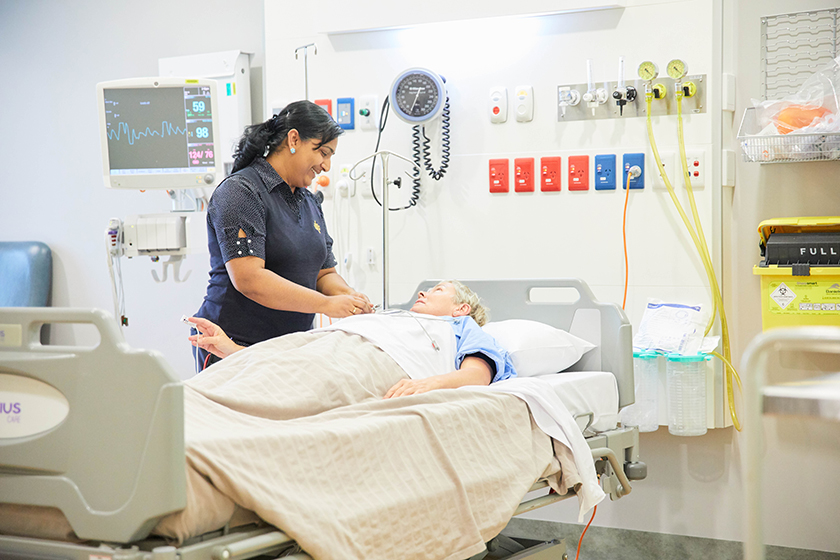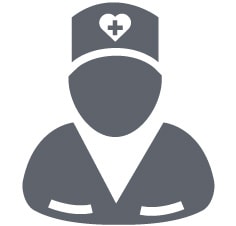Your skin needs blood flow to be healthy. If you stay in one position for a long period of time while in bed or in a chair, the weight on the bony parts of your body stops blood from flowing to the skin and can cause a pressure injury.
Pressure injuries may look minor (eg; redness in the skin) to begin with, but can hide more damage beneath the skin surface. If left untreated, the area can become quite painful.
While in hospital, you should advise nursing staff immediately if you notice signs of a pressure injury (such as redness that does not go away, broken skin, blistered skin or localised pain).
Pressure injuries are most common over the heels, bottom, elbows, shoulders, ears and lower back.
When in hospital, please let staff if you have or had:
- Diabetes
- Wounds on your legs or feet that have been slow to heal
- An amputation
- Pressure injury previously
They can then put extra prevention strategies in place and monitor for changes more closely.
Avoiding a pressure injury
While in hospital or during your recovery at home, you can minimise your risk of developing pressure injuries by:
- Changing body position frequently when lying in your bed or sitting in a chair (every one to two hours) to redistribute pressure.
- Asking for help to change your position if you are unable to move yourself.
- To reduce friction and shear, avoid sliding and ensure you move correctly when changing position.
- Drinking plenty of water.
- Maintaining good posture when sitting.
- Check your skin for signs of redness that does not go away when you move.
- Moisturising your skin daily.
- Informing nursing staff if your bed or clothing becomes wet.
Special equipment may be used to reduce pressure over bony areas. This may include an air mattress, which caregivers can organise for you while in hospital.
An occupational therapist can advise how to reduce pressure over bony areas once you go home.


